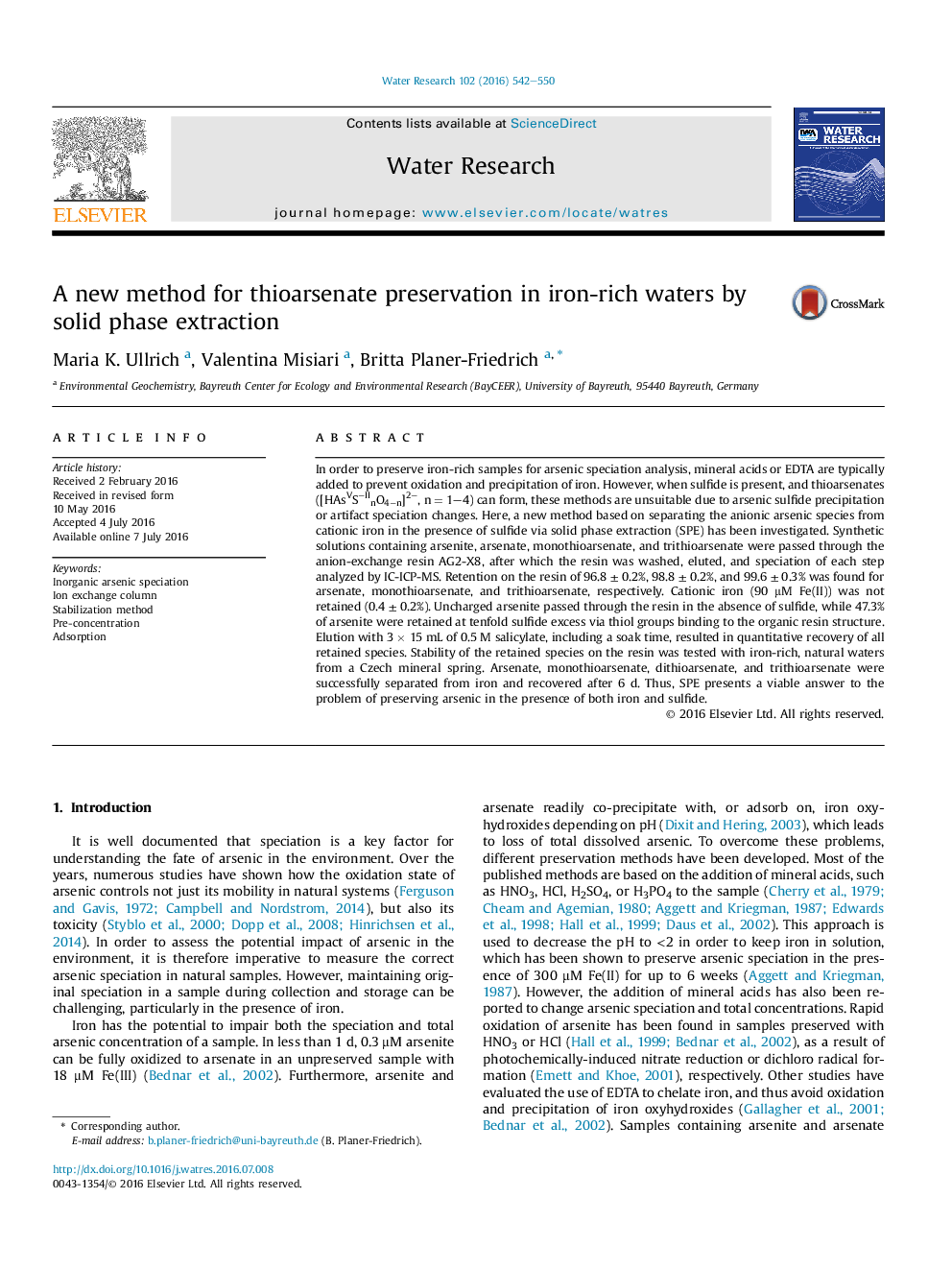| کد مقاله | کد نشریه | سال انتشار | مقاله انگلیسی | نسخه تمام متن |
|---|---|---|---|---|
| 4480885 | 1623066 | 2016 | 9 صفحه PDF | دانلود رایگان |
• Anion-exchange resin AG2-X8 can be used for As preservation in Fe-S waters.
• Anionic thioarsenates were retained, while cationic Fe passed through the resin.
• Uncharged arsenite was partially retained in the presence of sulfide.
• Elution with 0.5 M salicylate recovered the retained species quantitatively.
• As speciation was recovered after 6 d of dark storage at 4 °C.
In order to preserve iron-rich samples for arsenic speciation analysis, mineral acids or EDTA are typically added to prevent oxidation and precipitation of iron. However, when sulfide is present, and thioarsenates ([HAsVS−IInO4−n]2−, n = 1–4) can form, these methods are unsuitable due to arsenic sulfide precipitation or artifact speciation changes. Here, a new method based on separating the anionic arsenic species from cationic iron in the presence of sulfide via solid phase extraction (SPE) has been investigated. Synthetic solutions containing arsenite, arsenate, monothioarsenate, and trithioarsenate were passed through the anion-exchange resin AG2-X8, after which the resin was washed, eluted, and speciation of each step analyzed by IC-ICP-MS. Retention on the resin of 96.8 ± 0.2%, 98.8 ± 0.2%, and 99.6 ± 0.3% was found for arsenate, monothioarsenate, and trithioarsenate, respectively. Cationic iron (90 μM Fe(II)) was not retained (0.4 ± 0.2%). Uncharged arsenite passed through the resin in the absence of sulfide, while 47.3% of arsenite were retained at tenfold sulfide excess via thiol groups binding to the organic resin structure. Elution with 3 × 15 mL of 0.5 M salicylate, including a soak time, resulted in quantitative recovery of all retained species. Stability of the retained species on the resin was tested with iron-rich, natural waters from a Czech mineral spring. Arsenate, monothioarsenate, dithioarsenate, and trithioarsenate were successfully separated from iron and recovered after 6 d. Thus, SPE presents a viable answer to the problem of preserving arsenic in the presence of both iron and sulfide.
Figure optionsDownload high-quality image (261 K)Download as PowerPoint slide
Journal: Water Research - Volume 102, 1 October 2016, Pages 542–550
